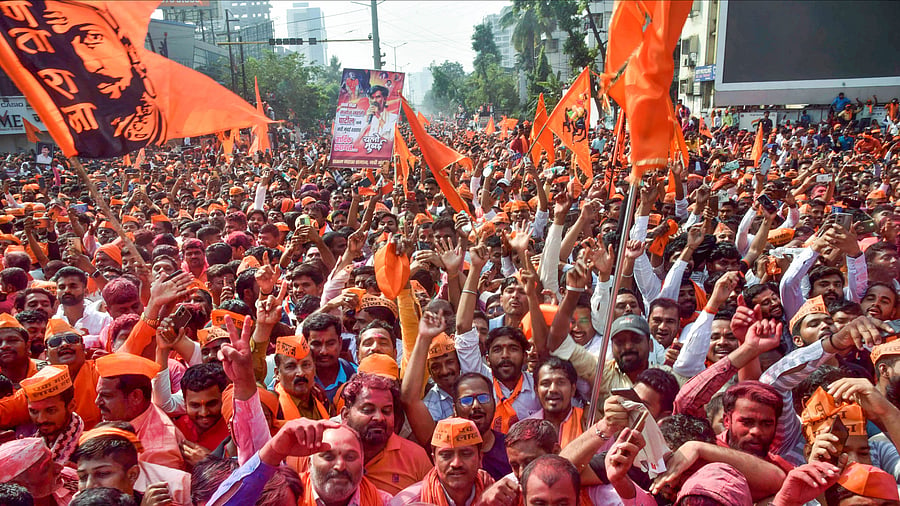
Supporters of Maratha reservation activist Manoj Jarange Patil celebrate after the Maharashtra government accepted his demands, in Navi Mumbai, Saturday, Jan 27, 2024.
Credit: PTI Photo
With Maratha quota activist Manoj Jarange-Patil embarking on his fourth hunger strike in less than a year, pressing for the inclusion of the Maratha community under the OBC grouping and urging the issuance of OBC caste certificates to those with Kunbi records, we delve into the origins and the evolution of the Maratha identity.
The genesis of the Maratha identity can be traced back to the medieval period in Maharashtra, a region characterized by a mosaic of agrarian communities, feudal lords, and shifting political allegiances. The emergence of the Maratha identity was a gradual process, shaped by historical events, socio-economic transformations, and cultural exchanges.
The early origins of the Maratha community lie within the broader framework of the agrarian society prevalent in Maharashtra. Groups such as the Kunbis, engaged in agricultural activities, laid the foundation for what would later evolve into the Maratha community. Over time, certain sections of the Kunbi populace transitioned into warrior roles, adopting martial traditions and forging alliances with local rulers.
The watershed moment in the crystallization of the Maratha identity came under the regime of Chhatrapati Shivaji Maharaj in the 17th century. Shivaji's vision of 'Hindavi Swarajya' (Hindu self-rule) galvanised disparate Maratha clans under a common cause, transcending caste and class barriers. Through his military campaigns and administrative innovations, Shivaji not only challenged the hegemony of the Mughal Empire but also fostered a sense of unity and pride among his followers, laying the groundwork for the emergence of the Maratha Empire.
Following Shivaji's demise, the Maratha Empire reached its zenith under the leadership of the Peshwas in the 18th century. The Peshwas, as prime ministers of the Maratha confederacy, extended Maratha influence across vast swathes of the Indian subcontinent through a combination of military conquests and diplomatic manoeuvering. This period witnessed the consolidation of Maratha power and the proliferation of Maratha culture and institutions, further solidifying the Maratha identity.
The decline of the Maratha Empire in the late 18th century ushered in a period of transition for the Maratha community. With the advent of British colonial rule, Maratha leaders navigated the intricacies of colonial politics, often collaborating with or resisting British authority.
Despite the political upheavals of colonial and post-colonial India, the Maratha identity endured, rooted in the collective memory of past glories and struggles. Maratha leaders played pivotal roles in the freedom struggle against the British Raj, contributing to the nationalist movement and advocating for socio-political reforms.
In conclusion, from its humble beginnings as an agrarian community to its zenith as a formidable empire, the Maratha identity has come a long way.
